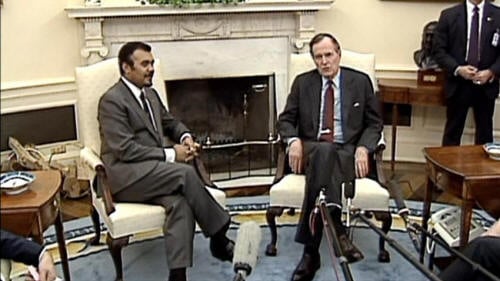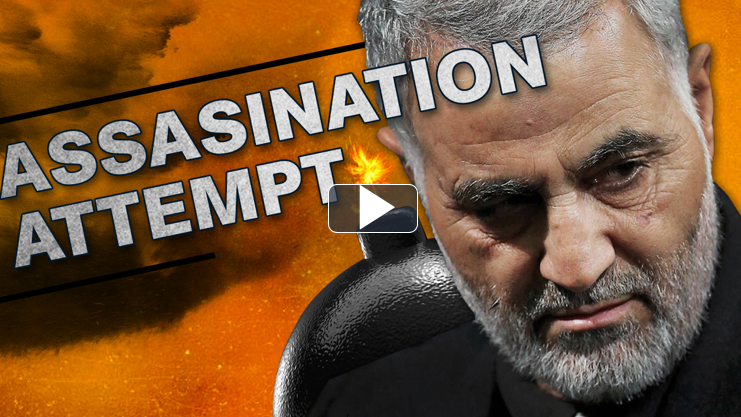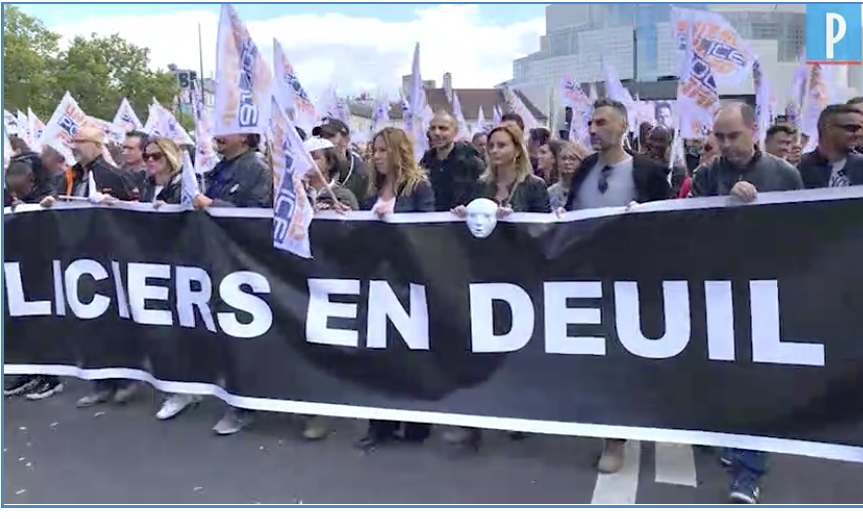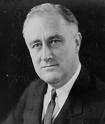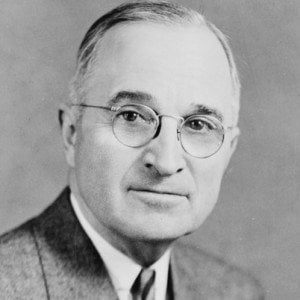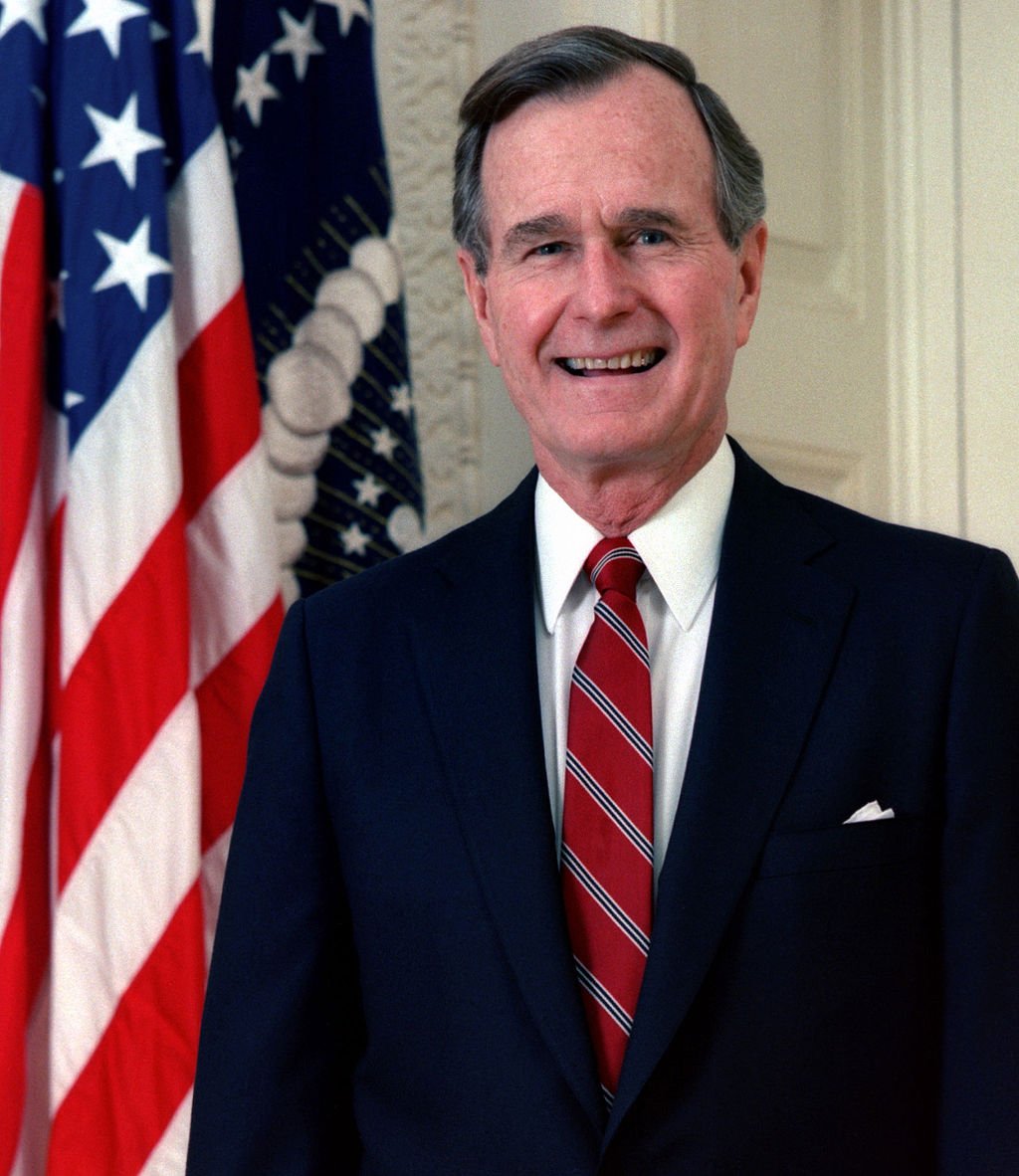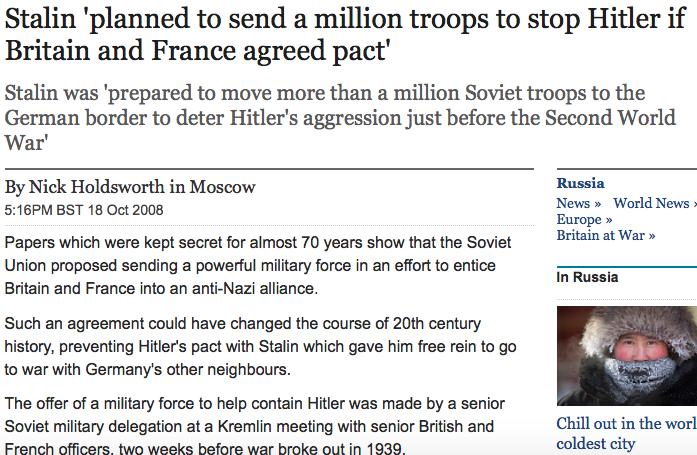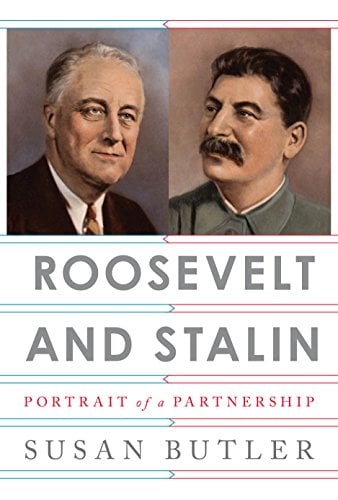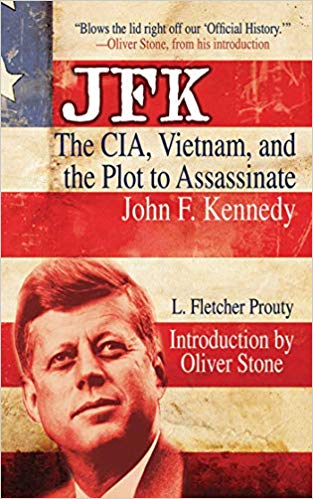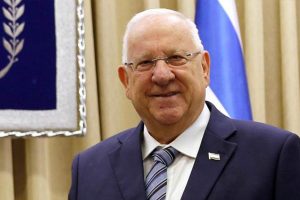Amid the radioactive fallout of the meltdowns at Fukushima Daiichi Nuclear Power Station and across what would come to be known as the Exclusion Zone, Japanese members of the nuclear lobby laboured to contain the political fallout of the Fukushima disaster. This article scrutinizes the profuse rhetoric over recycling as mobilized by nuclear boosters and the wider operations of circularity in waste management in Japan. Japanese leant heavily on the notion of recycling to attempt to frame the clean-up in Fukushima in more ideologically convenient terms. This led, for example, to officials trumpeting plans to ‘recycle’ over 16 million cubic metres of radioactive topsoil scraped from hundreds of square kilometres of Fukushima Prefecture, as well as efforts to achieve ‘thermal recycling’ by generating electricity from the incineration of collected irradiated vegetal matter and the large amounts of protective clothing and other material used in the ‘decontamination’ campaign. By scrutinizing this appropriation of recycling rhetoric and its leveraging across Japan’s nuclear waste management apparatus, the article exposes contradictions and distortions in contemporary Japanese policy that have considerable socio-political ramifications.
Introduction
The record earthquake and tsunami that struck Japan on 11 March 2011 ushered in a highly mediated disaster as Japanese grappled with the triple-meltdowns and radiation crisis at Fukushima Daiichi Nuclear Power Station.
Largely out of sight of international camera crews and probing journalists, the Japanese state and multiple municipalities embarked on the largest radiation response effort in history in an effort to restore hundreds of square kilometres1 covered in radioactive debris. This campaign saw about 70,000 Japanese workers remove over 16 million cubic metres of irradiated dirt2—scraping topsoil off roadsides, meadows, wooded areas, agricultural fields, school grounds, residential zones, shrine compounds, and parklands. Crews swept up radioactive twigs and pine cones, whittled exterior bark from tree stumps, and clipped low-lying branches in an attempt to bring radiation levels down to allow resettlement of tens of thousands of evacuees. Workers garbed in protective gear, joined by volunteers, scrubbed and hosed down streets, pavements, stairways, kerb stones, and storm drains in urban and suburban areas.
They also wiped down the exterior of houses, apartments buildings, shops, schools, and other public facilities, using specially treated wipes to clean roof tiles, gutters, window sills, panes, mullions, wall cladding, and doorsteps. Wipes and protective clothing were collected for separate incineration. This campaign allowed state, prefectural, and municipal representatives to record ‘safe’ radiation measurements in areas of Fukushima’s disaster zone—a major Japanese policy priority, particularly with the 2020 Tokyo Olympic and Paralympic Games on the horizon.

Source: Ministry of the Environment, Government of Japan; (accessed September 2019).
In parallel with these massive efforts to collect, or disperse, the radioactive fallout of the Fukushima Daiichi disaster, the pro-nuclear Japanese state engaged in aggressive PR-management to contain Fukushima’s political fallout, working with the nuclear lobby to frame the Fukushima campaign in favourable ideological terms. The scrubbing and scraping of a huge portion of Fukushima’s land area became branded as ‘decontamination’ (josen), despite clear contradictions described below. More telling still was the appropriation of the conceit of recycling to imbue the effort to remove radioactive dirt and other abominated debris with flattering hues of eco-responsibility and resource efficiency. This article3 scrutinizes the decontamination campaign in order to highlight the numerous ways in which the nuclear lobby has leveraged recycling in Fukushima to sanitize and promote nuclear energy throughout its mobilization on the archipelago, with implications for other nuclear purlieux.
Chimerical recycling
After spending decades as a perennial environmental villain through the turn of the millennium,4 Japan has transformed into a country where waste issues and recycling are taken very seriously. Japanese municipalities and industries recycle the usual stacks of paper and bins of plastic bottles and glass as well as breaking down and converting about a million tonnes of large consumer appliances (e.g., refrigerators, washers, air-conditioners) a year in highly automated facilities,5 part of what has been called ‘the shredder economy’.6 Every industrial sector complies with Japan’s strict recycling regulations, meaning that all manner of e-waste, from vending machines to pachinko machines, is dismantled, crushed, shredded, and separated to extract precious metals and other materials. These and other projects contribute toward environmental objectives, but Japan’s resource-consciousness derives as much from a fixation on rationalization and efficiency, communicated via catchphrases like ‘industrial ecology’ and ‘zero-emissions’ production. Ironically, there is not much concrete, demonstrable circularity in Japanese recycling.7 Yet circular-economy rhetoric pervades Japanese officialdom. It seems that virtually every ministry white paper, urban development project and metropolitan government report trumpets its concern with sustainability.8 Due to the political ends to which recycling is mobilized in Japan, most egregiously in the radioactive spill of the Fukushima disaster zone, this circularist rhetoric merits rigorous scrutiny.
While examples of discursive overreach vis-à-vis recycling abound in contemporary Japan, the yawning gaps and slippages in Japanese circularity are most evident and striking in the official response to the Fukushima Daiichi radiation crisis, whose determined work crews and complex logistics drive an effort that has been every bit as much of a disaster, in the end, as the earthquake and tsunami that struck Tōhoku in 2011. The Japanese Ministry of the Environment and its partners have branded the Fukushima effort as ‘decontamination’; but as demonstrated below, their use of this term is highly misleading. Instead, I refer to the campaign as The Clear for two reasons. First, ‘clear’ (kuriā) is a term used by Japanese officials and others to declare completion of a project or attainment of a goal, even though its invocation is frequently based on arbitrary bureaucratic targets and massaging of data belied by conditions on the ground (literally, in this case). Next, those involved in the campaign were physically attempting to clear away the radioactive debris that had settled on a huge amount of territory; this was uneven terrain, including steep hillsides, forestland, and residential areas, that would make such a task exceedingly complex and difficult, if not impossible. By declaring ‘clear’ on 31 March 2017, Japanese officials were strongly suggesting that radiation had been cleared away, as it had been ‘on paper’ in ministry documents. Yet as demonstrated in the next section, irradiation of dirt, trees, streams, sandy littoral, and meadowlands is a maddeningly tenacious condition to attempt to reverse, and the rush to clear away Fukushima’s radiation (and burnish its sullied reputation) within a tight, arbitrary timeframe made this Herculean task even more difficult to achieve. By appropriating the terms of exalted recycling to transform these millions of tonnes of radioactive dirt into ‘resources’, the nuclear lobby arguably made promoting this task much easier and more palatable to Japanese communities.
It may be difficult to recall with the crippled Fukushima Daiichi leaking tonnes of radioactive water daily into erstwhile prime fishing grounds in the Pacific, but the conceit of recycling has long bolstered the nuclear sector. Ever since the vaunted promise of limitless energy via fission became destabilized by accumulations of radioactive waste from the 1970s, nuclear elites sought to marshal those parlous residues in a drive toward greater efficiency, as well as discursive control. High-level nuclear waste—usually spent fuel rods from reactors—entered elaborate conversion infrastructures, rationalized as ‘reprocessing’, to transform hazardous, depleted residues into puissant resources. Perhaps the most audacious of these initiatives involved Japanese plans hatched in the 1980s to transform plutonium—arguably the world’s most toxic and dangerous substance, with a half-life of 24,100 years—into the pole star of Japan’s nuclear energy production apparatus. Such a plutonium economy would use fast-breeder reactors to generate energy from the most hazardous nuclear wastes at a time when most nuclear nations were abandoning the technology as unpromising and/or too dangerous. Significantly, this fixation on plutonium developed out of Japan’s long self-perception as a resource-poor nation, a key driver of imperial Japan’s colonialist ambitions through World War II.
Japan’s idée fixe over a perceived scarcity of natural resources has had a profound influence on the nation’s development. The idea of Japan as a ‘small island nation, poor in resources’, or shigen shōkoku nippon, emerged as a powerful discourse from the early twentieth century through the Second World War.9 Japan’s 1960s nuclear policy developed directly out of muscular hydropower initiatives that spanned the trans-war period, where abundant energy resources were seen as critical to ensuring Japan would secure membership in the top rank of great nations.10 Japanese elites seized on nuclear energy as a strategic means to achieve energy independence—paradoxically, of course, while being the only nation to have suffered wartime fallout from nuclear weapons after the 1945 atomic bombings of Hiroshima and Nagasaki. As Japan developed through the 1980s into one of the world’s most pro-nuclear states,11 a powerful domestic nuclear lobby began to promote plutonium as a kind of thermodynamic elixir capable of bestowing the archipelago’s energy needs almost indefinitely. Lest this seem like casual hyperbole, consider an exhibit at the Aquatom museum complex, located near Japan’s showcase fast-breeder reactor, called Monju: ‘Japan is a poor country in natural resources … therefore Monju, a plutonium burning reactor, is necessary because plutonium can be used for thousands of years’.12
Central to this campaign was the concept of circularity. Take the logistics that underpin nuclear fuel reprocessing, which involves both elements that typify ‘recycling’ as well as hazardous externalities which belie its exalted, circularist trappings. Only by ‘closing’ the fuel cycle13 could Japan’s spent fuel residues be transformed into (and re-consecrated as) new nuclear fuel stocks. In this heady policy climate before the radiation crisis of 2011, recycling came to take on a peculiarly talismanic quality when intoned by elite institutions invested with authority and lavish funding, such as the Agency for Natural Resources and Energy (ANRE). Even the mere invocation of a closed fuel cycle could conveniently rebrand spent fuel rods and other parlous nuclear residues as ‘resources’. Since these radioactive materials were therefore to be reused, and were represented by nuclear boosters as a dizzying thermodynamic bounty, the nuclear industry has largely been able to sidestep the thorny question of, for example, containing such nuclear waste in secure underground repositories—generally considered best practice, if expensive and difficult, by most major nations, with only Finland and the US testing appropriate facilities thus far.14 These so-called ‘final repositories’ for nuclear waste were, at any rate, deemed virtually impossible to establish on the archipelago. Since the devastation of Hiroshima and Nagasaki, no Japanese prefecture has wanted to host such a permanent nuclear waste repository,15 partly due to the enduring, though largely dormant, stigma of radiation among Japanese after 1945. Moreover, Japan is so seismic that it would be impossible to find a subterranean location capable of remaining stable for up to 100,000 years (a verdict confirmed by an expert panel of the Science Council of Japan, convened after the Fukushima Daiichi crisis unfolded, in 2012)—and therefore the task of convincing a potential host community to accept a final repository was deemed unworkable.16
For nuclear proponents, by contrast, there is practically no such thing as ‘nuclear waste’ due to the pivotal significance of circularity to the whole rationale of nuclear energy in Japan. Radioactive material is instead viewed as resources—valuable ascribed commodities in a sprawling reprocessing apparatus. This strategic posture has furnished Japan’s nuclear sector with considerable latitude to sidestep the very notion of perilous nuclear residues, long one of the costliest and most unpopular facets of nuclear energy globally. Meanwhile, Japan possesses about 17,000 tonnes of spent fuel rods, most of which are stored on site at nuclear power stations in jam-packed pools, above ground, in a highly earthquake-prone nation.17 These pools resemble drab onsen, radioactive versions of the idyllic hot springs for which Japan is famous, though these pools are heated up not by salutary geothermal currents redolent of therapeutic minerals but by the acute radioactivity of the spent fuel rods themselves, recalling the steaming, overheated wreckage of the Fukushima Daiichi reactors in the aftermath of the 2011 meltdowns.
The term ‘recycling’ imparts a sense of effortless, perhaps even endless, movement, dynamism, and highly rationalized process, particularly in the context of bold circularist discourse. But the overwhelming reality of Japan’s nuclear regime is that of relative stasis. These pools regularly hold several times as many fuel rods as any reactor, leaving them exposed, beyond standard containment, and therefore vulnerable. Once deposited, they generally lie for years, steeping in makeshift wet storage in the absence of a repository or a properly functioning fuel cycle. (And, after all, only nine of Japan’s commercial reactors are currently in operation anyway, and only a fraction are capable of burning the reprocessed fuel described above.)18 These components of chimerical recycling are sustained by a well-funded and integrated programme of spin—an ironic but appropriate circular metaphor here—along with a multitude of political capital wielded by well-placed institutional powerbrokers. Yet it remains striking how, in a nation celebrated for high-tech innovation and exacting quality control, this recycling apparatus has fallen far short of the circularist grandiloquence propagated by the sector. Most major nuclear nations have faced problems in trying to recycle, or ‘reprocess’, nuclear material—an inherently dangerous and messy set of procedures that in the process creates about 12 times more low-level and medium-level nuclear waste, by volume, than the original volume of nuclear waste that was sent for reprocessing—but Japan’s chequered history with managing nuclear externalities is notable, as explained in these pages, particularly when contrasted with Japan’s longstanding reputation for meticulous quality control and technological excellence.
Japan’s decades-long quest for a closed fuel cycle has not only been exorbitant but plagued by grave safety lapses and technical failures. Here, a few evocative examples of nuclear mismanagement suffice to convey the circularist disarray in Japan’s ‘nuclear village’. The centrepiece of the nation’s audacious plans for energy independence was the aforementioned fast-breeder reactor called Monju, located in Tsuruga on the Japan Sea. Named after the bodhisattva representing transcendent wisdom, the facility operated in a rather more mundane fashion. Completed in 1994, the plant fell offline in 1995 after a serious leak of sodium coolant ignited a major fire, causing extensive damage. A semi-governmental agency’s subsequent bungled coverup brought infamy upon the plant, its operators and regulators, and the nuclear industry generally. Monju was intended to burn, and in turn ‘breed’, plutonium from the spent fuel produced by Japan’s nuclear power stations, but repeated attempts to bring Monju back online within Japan’s aspirational nuclear fuel cycle failed. Having cost about $12.5 billion, the facility was finally slated for decommissioning in 2017 after having produced only a tiny amount of energy. Its decommissioning and dismantling are estimated to cost approximately $3.3 billion more and take until the year 2047.19
Another key component of the nuclear fuel cycle was to be Rokkasho, a sprawling reprocessing facility on a remote peninsula of Aomori Prefecture—the northernmost extremity of Japan’s main island. The Rokkasho plant, embarked upon in 1993, has never been fully operational. Nevertheless, after over $12 billion invested and a quarter century in limbo, Rokkasho has repeatedly been depicted as on the verge of activity. The plant therefore appears to serve as an expensive and unacknowledged semantic deposit on the nation’s whole programme of nuclear fuel recycling. Particularly with Monju slated for decommissioning, over the strident objections of Japan’s nuclear boosters, Rokkasho remains the most compelling symbol of Japan’s aspirations for a closed nuclear fuel cycle. Or in other words, without Rokkasho forever on the reprocessing horizon, the 17,000 tonnes of spent fuel rods languishing in cooling ponds next to Japan’s dozens of mostly idled nuclear reactors would be in danger of unfavourable re-interpretation: not as ‘resources’ to power the nation but as highly toxic and radioactive nuclear waste, a ponderous burden on the nation’s balance sheet and a damper on its circularist aspirations. Significantly, the central government’s agreement with Aomori Prefecture stipulates that no nuclear residues will continue to be stored at the facility if the nation’s reprocessing effort falters.20 This provides additional incentive to keep up appearances, even as Japan’s fuel recycling effort lies in ruins—both figuratively and in some cases literally. (For example, the decades that Rokkasho’s facilities have lain idle have taken their toll, with the vast conversion infrastructure corroding and deteriorating in numerous places due to poor maintenance inspections and general disuse.)21
Copious recycling rhetoric notwithstanding, then, a great deal of nuclear waste in Japan has simply been converted into other forms of waste. Much is left to languish at different material stages due to what might be called insufficient circularity. Without the domestic capacity to achieve its objectives, the nuclear sector has been forced to scrounge elements of this cyclical potential with the help of European allies—a makeshift, stopgap measure that will no longer be workable in any long-term sense.22 For example, of Japan’s stockpile of more than 47 tonnes of weapons-usable plutonium (enough for more than 6,000 warheads), all but 10.5 tonnes are located at reprocessing sites in the UK and France (with about 21.2 tonnes at Sellafield and about 15.5 tonnes at La Hague, respectively).23 Some of the MOX fuel rods, comprised of mixed-oxide uranium and plutonium reprocessed overseas from Japan’s spent fuel, have been burned in a handful of specially calibrated reactors in Japan, but for the most part, the overwhelming bulk of Japan’s nuclear residues remains curiously unproductive—particularly so now that most of Japan’s reactors remain offline in the wake of the Fukushima Daiichi meltdowns. Only through the peculiar rhetorical alchemy of recycling explained above do the piles of spent fuel rods soaking for years in pools within nuclear power station compounds take on the guise of ‘resources’. With the Rokkasho reprocessing facility forever on the verge of becoming operational, Japan’s many tonnes of spent nuclear material are thereby spared the designation of nuclear waste, a classification which would usher in a host of thorny consequences. For instance, Japan possesses far more weapons-usable plutonium than any self-respecting pacifist, no-nukes nation would normally ever dream of having.24 Imperious postwar security guarantor the United States has already signalled its displeasure with Japan’s wildly disproportionate plutonium stocks, manifest most recently via a six-month termination clause in a key bilateral civil nuclear treaty governing Japanese plutonium.25 If the nuclear lobby fails to demonstrate a more plausible justification for this vast stockpile of plutonium, Japan may encounter diplomatic and geopolitical obstacles down the road. This is particularly challenging because Japan has benefitted from a certain strategic ambiguity with regard to nuclear weapons over the years. While remaining officially pacifist and anti-nukes post-1945, Japan has nevertheless for several decades possessed more than enough technological and engineering know-how to produce nuclear weapons. It boasts a well-regarded space agency, the Japan Aerospace Exploration Agency (JAXA), that launches missile-like rockets into space. The military and geopolitical ramifications of Japan’s enormous plutonium stockpile have therefore certainly not been lost on prickly East Asian rivals like China and North Korea, who have long been sceptical of Japan’s reprocessing rationale, particularly with regard to plutonium.26
Chimerical recycling has bolstered Japan’s nuclear fuel-cycle strategy for a number of years, but it was only with the advent of the Fukushima Daiichi radiation crisis that more novel forms of nuclear waste materialized on the archipelago, exposing serious inadequacies in the nuclear apparatus and necessitating official response. These include the estimated 100 tonnes of radioactive water that leak into the Pacific Ocean every day from the bowels of the ruined nuclear power station, as well as the nearly 1000 giant, serried tanks of Tritium-laced water slowly filling the 350-hectare Fukushima Daiichi compound as effluent from the facility’s own filtration system—now exceeding a million tonnes in total. (Referring to the highly toxic liquid residues these tanks hold, even the environment minister himself recently stated that ‘The only option will be to drain it into the sea to dilute it’ to alleviate the ever-increasing burden of radioactive water storage there.)27 Leaving aside the wreckage of the Fukushima Daiichi Nuclear Power Station—itself a twisted and heterogeneous mass of nuclear waste requiring at least several more decades of highly specialised work to dismantle and segregate—the trope of recycling has been invoked to mobilize, and justify, the colossal effort to sequester and make efficient many millions of cubic metres of radioactive dirt and other debris brought on by the 3.11 disaster. Ambivalent Fukushima Prefecture has, thus, become a pivotal testing ground for the principles of circularity that have guided Japan’s nuclear sector for decades, offering a useful opportunity to interrogate the core precepts of nuclear recycling in evidence there.

Decontamination work, Nihonmatsu, Fukushima. Image credit: Peter Wynn Kirby.

Decontamination work, Nihonmatsu, Fukushima. Image credit: Peter Wynn Kirby.

‘Clean’ dirt ready to spread on agricultural field cleared of radioactive soil, Tomioka, Fukushima. Image credit: Peter Wynn Kirby.

Woman with dosimeter taking a break from decontamination work, Nihonmatsu, Fukushima. Image credit: Peter Wynn Kirby.
Shifting geographies of transcontamination
A crew of seven men and one woman, clad head-to-toe in helmets, face masks, protective clothing, gloves, and rubber boots wielded rakes and shovels to scrape radioactive dirt and vegetal matter from a wooded area around a local shrine in Nihonmatsu, not far from the Exclusion Zone, in autumn 2015. The crew laboured to remove enough radioactive debris to bring radiation levels back down toward levels deemed safe by the Japanese government. This involved clipping off low-lying tree branches and clearing away small bushes and undergrowth. (Elsewhere, in Iitate village, I have witnessed bark removed so aggressively from tree stumps that they had been whittled down to resemble pencil-stubs gnawed by schoolchildren.) Yet in spite of the serious nature of the job and the tragic backdrop of contaminated Fukushima against which they worked, the crew were rather grumpy. Their foreman, Nakayama-san, complained about how low their pay rate was, a paltry 720 yen per square metre compared to more desirable work around residential areas, called jutaku josen, which paid better mostly because it was calculated by weight rather than by area. Having previously worked as an insurance agent, the stalwart, outspoken Tohoku native railed against the government’s standards for calculating radiation safety, which he called too lax. ‘We’re mormotto (guinea pigs)!’, he declared, or test subjects who could be studied for decades. He and his crew worked long and hard to collect huge black bags of radioactive waste for collection as part of a campaign that was called ‘decontamination’ (josen), but they were under no illusions that the area would be free of radiation in the years to come. (Below, I describe how such workers see the decontamination effort as extremely patchy or non-existent in places, belying the campaign’s very moniker.) It also remained far from clear how the problem of radiation stored in these large black bags would ever be adequately resolved.
Japan’s Ministry of Environment announced vague plans for an Interim Storage Facility (ISF) for radioactive material in 2014, to be located in Fukushima Prefecture, with more concrete plans by 2016. The proposed site would occupy already highly radioactive terrain. Encompassing 1,600 hectares in a half-doughnut shape, the facility would literally nestle around the compound of the crippled Fukushima Daiichi Nuclear Power Station, perched on Fukushima’s Pacific coast at the heart of the Exclusion Zone. Though proximity to Fukushima Daiichi suggests to a reasonable layperson that the facility would hold high-level nuclear waste such as the slumped uranium fuel located below the power station’s wrecked reactors, in fact the ISF planned to store, for a time, the millions of cubic metres of radioactive soil and other biomass collected from the irradiated territory of Fukushima Prefecture since 2011.
It is central to the political culture of the reconstruction effort that Fukushima’s various storage sites for radioactive material clearly advertise their transitory nature. For seven years, about 16 million huge black bags (furekon), each about the size of a hot tub and weighing approximately a tonne when filled,28 have sat in piles scattered around the Exclusion Zone. These furekon bags are filled with radioactive topsoil scraped from the surface of most of the prefecture’s hardest-hit areas, by crews like that of Nakayama-san, and at first lie in odd, desultory heaps of perhaps two to six bags before being transported by truck to what are known as kari-kari-okiba (third-tier storage, literally ‘provisional-provisional’ depots). After a time, sometimes a year or more, workers will move these bags to further, though still provisional, second-tier storage depots (kari-okiba) located throughout the region. All these sites, clearly blazoned as temporary, keep the bags in motion just enough to sell a rationalized system, but in fact the bags still have nowhere to go. An elaborately designed Interim Storage Facility, its name similarly advertising its impermanence, exists mostly on paper in the form of a series of diagrams and renderings, as Ministry of Environment officials await cooperation of the aforementioned, tetchy absentee landowners who, since 2011, find themselves holding title to parcels of some of the most abominated land on the planet. Significantly, the ISF plan was only signed off on by the prefectural governor on the proviso that all radioactive material stored there must leave Fukushima after 30 years, at which time prefectural and central government authorities hope eventually to begin converting the land to a park. However, such a restored future green space remains far from guaranteed, as does much of the facility itself. By the end of winter 2018, only 52.8 percent of the private landowners had agreed to lease their land to the government,29 meaning that implementation of the plan is largely beyond the power of the state to guarantee. In the meantime, the overwhelming quantity of bags of irradiated material mostly move around the chimerical circle of provisional destinations, somewhat like an intermittent game of pass the parcel. While, for a time, the state could put bags of radioactive dirt almost anywhere during the decontamination process, these bags slowly aggregate in successive particular sites. These sites are generally leased from landowners and therefore generate revenue.
All this material flux involves long concatenations of logistical steps. Moving millions of furekon bags requires trucks, and the standard Japanese truck can only hold a maximum of six of these bags. Therefore, to transport all the bags from the scattered sites where they were initially collected (gemba hokan) to the subsequent sites of formal storage—and eventually to the ISF—involves over two million truck journeys, a staggering figure.30 Moreover, according to the manufacturer, the bags are meant to last just three years and some bags must also be decanted regularly due to further routine damage, bringing even more stuttering progress. The scale and logistical complexity of The Clear has provided piecemeal work for members of local communities as well as for transplants, with some local companies subcontracted to do scraping, collection, transport, and so on. This is, however, small comfort after the radioactive defilement of hundreds of square kilometres of their home region, the decimation of Fukushima’s agricultural sector (even in relatively unaffected areas distant from the meltdowns), the evacuation of tens of thousands of residents, nearly 8 years of upheaval, and a highly uncertain future.
Improbably, authorities speak of ‘recycling’ all these millions of tonnes of dirt. The most likely scenario I have heard bruited by nuclear clear-up officials involves creating massive anti-tsunami berms along the coastline, with ‘recycled’ radioactive dirt comprising the core of these structures for many miles. Based on my decades of research on this topic in Japan,31 such a strategy is a long way away from what most Japanese associate with the term ‘recycling’. Under rosy scenarios of public use, such radioactive dirt would be sequestered safely within berms, but such strategies incur potential risks of contamination of surrounding land and coastal seas, particularly worrisome given the periodic seismic events that jolt contemporary Japan.
Yet sustainability discourse in Fukushima goes further. Ministry officials are executing their plan to incinerate all the vegetal matter collected across and around the Exclusion Zone, along with all the protective clothing (gloves, coveralls, masks, and so on) used in decontamination operations. Because Japanese incinerators generate electricity from their operations, environmental officials and partners dub this process ‘thermal recycling’. For deeply sceptical informants based in communities around the Exclusion Zone, such rhetoric often falls on deaf ears. Some Fukushima residents feel it is their duty to agitate against the environmental health excesses of this campaign, and I have witnessed the gamut of such protests, from activists banging drums on a street corner in Fukushima City to having a quiet word over tea with a local politician. For many others whose lives were turned upside down by the nuclear plant meltdowns and radiation crisis and subsequent evacuation, the emotional toll has been devastating. As one middle-aged woman put it, referring to the large black bags used for bulk transport in Fukushima, ‘The furekon are filled with our tears’.
Problematically for nuclear stakeholders, the lofty goals of the decontamination programme are undermined by the inconvenient properties of radionuclides, as well as by the uneven terrain of Fukushima itself. For there is no such thing as decontamination when dealing with radiation—there is only transcontamination. As Associate Professor Shinzō Kimura, a Dokkyō Medical University radiation health researcher working since 2011 in Fukushima, explained, ‘Radiation cannot be eliminated. It can only be transported from one place to another…. This is clearly transcontamination, with no easy solutions…. Fukushima’s “decontamination” is a complete misnomer—it’s a con perpetrated against the Japanese people’.
Fukushima’s elaborate decontamination programme is therefore, in essence, a matter of taking radioactive debris from one part of Fukushima and moving it to another part of Fukushima. More precisely, the radioactive material enters stuttered slow motion, moving periodically from one place to another, with no certain final destination. By 11 March 2019, the eighth anniversary of the radiation disaster, only about 15% of the total volume of radioactive soil (2.3 million cubic metres) had been transported to the as-yet only partially realized Interim Storage Facility, with a flotilla of trucks making about 1600 roundtrip journeys each day.32 According to the ISF plan itself, much of the nuclear waste would be on the move again in a few decades. Meanwhile, the supposed clean-up in Fukushima falls short, with too much radiation lingering in ‘decontaminated’ sites in question. Of course, true to form, Fukushima’s custodians like the Ministry of Environment have rationalized and transported a sizable amount of Fukushima’s radiation—but by no means all. After scraping up dirt and other matter, after cutting weeds and clipping low branches, workers spread a layer of ‘clean’ soil from elsewhere in order to be able to take out a Geiger counter and produce a ‘safe’ reading. In Fukushima, safety was a labile concept, with sizeable constituencies ambivalent about the aftermath of the 2011 radiation crisis. A number of the decontamination workers I interviewed and witnessed in action were sceptical that The Clear, across vast expanses of Fukushima, had been wholly successful. They had seen first hand the occasional patchiness of the work, the places where they or others had had to cut corners due to the vagaries of rigid schedules, weather, diktats from up the food-chain, and so on.33 The Japanese government claims that areas are now ‘safe’ due to Geiger counter readings, but activists and others accuse the government of putting their thumb on the scale, so to speak—taking many readings over time and throwing out the undesirable high radiation measures as “failed” tests, thereby keeping only the lower radiation readings. As dodgy as this may sound, I came across a similar tactic used by the Tokyo Waste Bureau during a successful community challenge against the Tokyo Metropolitan Government in a 1999 toxic pollution dispute. The independent scientist who had carried out the atmospheric measurements testified that government officials had warped the data he had carefully compiled, in similar fashion.34 While controversy smoulders over the decontamination effort, weary communities attempt to return to normalcy, unconvinced that the situation on the ground will get much better.
Kimura-sensei demonstrated the absurdity of The Clear, energetically sketching out a rudimentary farm on a white board in his Nihonmatsu laboratory. ‘The decontamination activities are a joke…. [They] scrape the dirt from the agricultural fields, but leave the fringes untouched. Cows then eat irradiated grass, becoming irradiated themselves, and shit radiation onto the “decontaminated” soil. This can then contaminate crops over time…. Both the plan and the implementation are a complete farce’. Radiation remains most acute in the margins, in the neglected areas between sites that have been deemed suitable for decontamination. For instance, in communities like Naraha where only about 15% of the pre-disaster population has returned and resettled in the past couple of years,35 putatively sanitized areas resemble islands and peninsulas surrounded by eddies of higher radiation, particularly in wooded and/or overgrown areas, which the ministry has relinquished to so-called ‘natural decay’. Natural decay entails simply waiting for the radiation to go down by itself, without intervention. Caesium-137, for example, has a half-life of over 30 years, which means that when the proposed ISF is to be shut down in the late 2040s, the Cs-137 in Fukushima’s soil will still be perhaps half as radioactive as when it first hit the ground—still exceeding international standards, as shown below.
Take the northern area of Tomioka Township, which is still designated a ‘difficult-to-return zone’—meaning that, on average, the area continues to emit more than 20 milliSieverts per year of radiation. (For reference, the US Nuclear Regulatory Commission mandates a maximum exposure for American communities of 1 milliSievert per year over background radiation.)36 I and collaborator Toshihiro Higuchi conducted ethnographic fieldwork on The Clear, in Tomioka, before the evacuation order was lifted there on 1 April 2017. We explored derelict neighbourhoods and the desolation of its evacuated, overrun, intermittently bag-scattered terrain. We also witnessed the MOE’s clear-up of farms in the region, where they endeavoured to spread ‘clean’ dirt over fields and property to bring down radiation levels. Northern Tomioka is a patchwork of some areas that test relatively low on a Geiger counter and other zones that have radiation many times higher, like thickly wooded areas, hilly precincts, even just the overgrown areas near roadways. This reflects the maddening variation throughout the rest of Tomioka and the entire area around the Exclusion Zone. Forbidding teenagers to wander in the woods or scolding children for digging in the ground, and scraping away surface soil is far from decontamination—this is, instead, decontamination for show, decontamination that is literally superficial. Furthermore, Fukushima remains teeming with irradiated boar and deer who are heedless of the boundaries imposed by human nuclear functionaries, not to mention the multitudes of birds and other creatures who roam the area. Wild boar is a delicacy in Japan, but since Fukushima boar have been found with levels of Caesium-137 over 300 times Japan’s radiation limit for human consumption, boar have morphed from culinary treat into toxic vermin. Tomioka Town has killed many hundreds of boar in recent years, but overwhelmingly as a preventative measure, not for their meat. While Fukushima municipalities attempt to enlist greater numbers of hunters licensed to shoot boar to help control the infestation of these determined radioactive interlopers,37 for example, it is clear that this is selective decontamination by state fiat, finding little purchase on the disaster zone’s intricate non-human ecology.
Granted, one wouldn’t expect Fukushima Prefecture to advertise its radiation travails to tourist visitors and prospective investors. Nevertheless, it is ominous that government proclamations regarding revitalization of the area in and around the Exclusion Zone intone about jobs but seem geared toward a future with relatively few humans. The Fukushima Prefectural Government now promotes a plan, dubbed The Innovation Coast, that would transform the unwelcoming region into a thriving zone of high-tech innovation. Much of the development along the purportedly revitalized Innovation Coast would be directed towards a ‘robot-related industrial cluster’ and experimental zones like the Fukushima Robot Test Field.38 Both in the Robot Test Field and in other planned facilities, engineered runways and surrounding radiation-hit areas would serve as prime territory for testing aerial drones for a range of purposes in various weather conditions—which would be difficult or impossible to achieve elsewhere in relatively densely populated Japan. The planned site for the test field would link with a secluded test area about 13 kilometres due south along the coastline, located closer to Fukushima Daiichi, to coordinate test flights over the unremediated Exclusion Zone’s more or less posthuman terrain.39 Naturally, unlike Fukushima’s human residents, robots and the sometimes highly automated facilities that produce their components would be oblivious to the elevated—but to robots not debilitating—radiation levels found outside the Fukushima Daiichi facility itself. In addition, prefectural officials have suggested that the Exclusion Zone environs could play host to a range of other services that don’t require much human intervention, such as long-term archive facilities.40
Proud long-time residents of Fukushima, for their part, see all this proposed development as a continued ‘colonization’ of their home prefecture by Tokyo41—namely, a well-worn pattern of outsiders using the zone for their own purposes, as were the original nuclear proponents who built the ill-fated Fukushima Daiichi plant in the first place. Moto, a man born and raised in Fukushima City and educated in an elite Ivy-League graduate programme, lambasted the process. ‘This has been going on for many decades. Again, we have outsiders coming into Fukushima, dictating how to use our land, how to exploit our resources. They need to take account of the wishes of the people of Fukushima, how we want Fukushima to be’.42 Moto and his family, along with neighbours, discovered in 2017 that the Fukushima City Council—facing massive radioactive waste volumes—had arbitrarily decided to use an open green area in the middle of their community as a temporary storage facility for radioactive dirt, without undergoing the usual elaborate consultation process.43 A university history professor commuting to Sendai, Moto humbly proclaims himself an ‘academic from the sticks’ (inaka) with no activist experience. Nevertheless, he proved himself an unusually capable political infighter. He quickly mobilized his extensive local contacts in Fukushima politics to shoot the proposal down within a handful of days, ensuring that the city would think twice before attempting to exploit the site again. Yet the project was subsequently moved not far away to another, less well-off neighbourhood, prompting his wife to say, ‘Yes, we are glad that the project will no longer go forward less than a hundred metres from our home, but the people who live [in the other community] are less enfranchised, less able to protest. I feel terrible…. This shouldn’t be happening. They shouldn’t be doing this to local communities in this way’. Many locals—even those who have benefited from the upsurge in clear-up work after 2011—have grown to criticize the whole project of decontamination. One notable turn of phrase, josen yori osen (‘[it’s] more pollution than decontamination’), caustically juxtaposes ‘decontamination’ (josen) with its near homophone ‘pollution’ (osen), engaging in a form of wordplay common in Japanese.
Naturally, sustainability and recycling figure in the prefecture’s Innovation Coast plan. Promotional materials invoke the circular economy of recycling Lithium-ion batteries from electrical vehicles into other energy-storage products at a newly completed facility in Fukushima; another Fukushima plant promises to produce all the hydrogen needed for fuel cells with renewable energy, and Fukushima Prefecture itself aims to derive 100 percent of its energy from renewable sources by 2040.44 Fukushima stakeholders trumpet the putative synergies created by concentrating these industries in the region; furthermore, all design studios, factories, and staging grounds would be governed by the same strict laws on processing and converting electronic and other wastes as the rest of Japan. But despite the evocations of circularity along the planned Innovation Coast, the scheme flirts with unreality as it brushes aside radioactive threats in Fukushima. The recovering, tsunami-hit region remains at risk. The millions of tonnes of radioactive soil, the large expanses of defiled territory relegated to ‘natural decay’—these, understandably perhaps, remain downplayed in favour of the opportunities presented by a sprawling, relatively depopulated area of Japan available for experimentation with perilous drone technologies and automated systems, as well as abundant cheap land and tax incentives for newly built manufacturing sites. Zooming out from such glossy public-relations portrayals—made with an eye toward the coming 2020 Tokyo Olympic and Paralympic Games—demonstrates the limits of the government’s attempts at rationalization. Where nuclear waste languishes in various stages of inertia/abandonment, the circularist nuclear establishment projects a utopian system, with materials forever floating along tight, efficient loops of eco-conversion to feed a self-correcting market. All the while, the very radiation that necessitates the clear-up helps pull off the PR campaign; due to elevated radiation, the most dangerous areas outside Fukushima Daiichi remain depopulated and therefore little scrutinized. Even the radiation in marginal areas that are legally accessible tends to discourage interlopers.
To be sure, all the dreadful externalities of the triple-meltdowns in Fukushima presented here notwithstanding, there are pollutant drawbacks to other forms of energy production. Toxic air pollution and hazardous tailings associated with exploiting coal energy cause hundreds of thousands of premature deaths around the world annually45 and depredate landscapes. The same goes for other fossil fuel exploitation, such as oil and natural gas/fracking, which due to their vast scale and favourable margin have the potential to warp entire planetary regions.46 ‘Clean energy’ doesn’t get a pass, either. Production of solar panels and wind farms requires energy and material resources. Eventually, this eco-infrastructure will result in e-waste that will need to be handled responsibly. Ditto for electric cars, which, to a degree, will only be as eco as the forms of energy that charge their batteries. Yet the economies of scale triggered by nuclear calamity reach a different order of magnitude, as Fukushima demonstrates. Communities in and around the Exclusion Zone will struggle with radiation for generations, particularly near acutely irradiated areas left to ‘natural decay’. Many of the evacuated communities in Fukushima have been unsuccessful in attracting more than a small fraction of their former populations back for resettlement—usually about 15%—and the whole prefecture must grapple with the stigma of radiation that affects who buys Fukushima produce, who comes as a tourist, who decides to move to the area, and who marries their offspring. Not to mention that Japan has failed to convince its citizenry that obdurate Nuclear, Inc., has truly learned from the triple-disasters about the swift, durable ruin of large-scale radiation events from crippled nuclear facilities and the cost of shoddy management and careless quality control. Though the nuclear lobby seems largely unfazed in its push for return to the status quo ante energy strategy, the Fukushima Daiichi debacle has done rough violence to the illusion of circularity and control that the nuclear industry has propagated over decades.
Given the broad significance of circularity to Japan’s nuclear sector, it is even more striking how recent efforts to ‘recycle’ nuclear waste in public works projects and in agriculture give the lie to the eight-year circularist campaign in Fukushima. In June 2018, the MOE diverged sharply from long-articulated plans to recycle radioactive soil collected in Fukushima. In a recently published outline,47 the ministry instead set out to offload radioactive dirt in road-building and agriculture in various sites throughout Fukushima—prompting vociferous protests from community groups. For instance, along a 200-metre stretch of road in the town of Nihonmatsu, the ministry proposed to place 500 cubic metres of radioactive dirt underneath the roadway. The ministry explains that the dirt, having levels of approximately 1000 becquerels per kilogram, would be covered with ‘clean’ dirt to block the radiation—small comfort to local farmers keen to advertise their produce as free of radiation, not to mention concerned homeowners and casual passersby. (For comparison, the Japanese government maintains a radioactivity safety limit of 100 becquerels per kilogram for foodstuffs for human consumption—though no one intends to directly eat the dirt, the disparity between the levels is resonant in an agricultural area that longs to become a major food producer again.)48 Furthermore, officials intend to use radioactive dirt to grow crops within Fukushima Prefecture. According to the MOE, this ‘recycled’ soil would not, however, yield produce intended for human consumption, representing an (unsuccessful) attempt to alleviate the sharp concerns of yet more local farmers and residents.49 Under Japanese law, soil of up to 8000 becquerels per kilogram can be used for a variety of purposes, a regulatory flexibility that government stakeholders are attempting to turn, gradually, to their advantage. By contrast, the International Atomic Energy Agency maintains a standard of 100 becquerels per kilogram for material containing Caesium-137.50 Opposition to the plan from communities in Fukushima demonstrates the chasm between rosy projections generated by officialdom and what exasperated residents will tolerate. In a society broadly shaped by recycling regimes, it seems that, after 3.11, there are limits to what forms of circularity residents are willing to accept—particularly when the ‘circularity’ of Fukushima’s nuclear waste dead-ends in one’s residential neighbourhood.
Conclusions
The colossal scale of the clear-up in Fukushima bears perhaps inevitable comparison with other monumental human endeavours, epitomized by the much-bandied construction of the Egyptian pyramids. The mastaba-shaped waste mesas of Fukushima, comprised of serried stacks of hundreds of thousands of black furekon bags that loom over desolate areas in and around the Exclusion Zone, may not seem as visually impressive as, say, the Great Pyramid of Giza (weighing about 6 million tonnes and having a volume of approximately 2.5 million cubic metres). Yet the eight-year project of gathering up more than 16 million cubic metres of radioactive dirt, transporting it over considerable distances, and eventually constructing enormous ziggurats of furekon bags swaddled with enough tarpaulin to cover all the football pitches in the Premier League many times over does exude a somewhat Pharaonic character. Nevertheless, what is striking about The Clear in Fukushima is that this whole campaign is designed to achieve precisely the opposite result. Instead of constructing a series of monuments out of the most durable materials available, such as granite, to create a lasting memorial—as did the pharaohs—Japanese government authorities instead composed a succession of gigantic (but slowly shifting) depositories that advertise their transitory nature. The vicissitudes of weather and circumstance continue to take their toll, but the most committed destructive force that these structures will face is their very builders. Officials have guaranteed that these radioactive plateaux will be removed from Fukushima Prefecture in less than three decades. As regards the radiation therein, the government has gone to great lengths to disguise, play down, or otherwise diminish the quantity contained in these piles. Whether to line the undersides of roadways, fill mammoth berms along Fukushima’s coastline, or use in reclaimed land or other construction, nuclear officials are determined to find ways to reduce the gargantuan scale of this volume of radioactive dirt until there is virtually no remaining trace—contradicting the profuse recycling rhetoric generated in Fukushima since March 2011. What this decontamination campaign does comprise, however, is a monumental glorification of Japanese models of circularity.
Circularist discourse on recycling tends to express the conversion of residues—either explicitly or implicitly—as a seamless process, free of emissions or other externalities. Moreover, diagrams and other renderings make recycling appear not only effortless but as forever ongoing. Such exhortations of circularity become, therefore, less descriptions of a process than expressions of a worldview, one that through its banality subtly creeps into general consciousness. With both a powerful pro-nuclear lobby and the 2020 Tokyo Olympic and Paralympic Games looming on the horizon, Japanese authorities will have every incentive to make this radioactive dirt disappear in a range of inventive ways that have nothing to do with recycling. Nevertheless, a veil of circularity will help colour, and obscure, the familiar process of converting nuclear wastes into yet other forms of nuclear waste. This time-honoured exercise in nuclear PR will likely perdure alongside the current revolution in solar power, offshore windfarms, and other sustainable energy sources, many of whose rates already undercut new-build nuclear. The well-funded nuclear campaign to promote circularity in Japan will then increasingly seem like another problematic residue of the Nuclear Age, one that will endure far longer than it really should.
As demonstrated in these pages, the clear-up of the Fukushima disaster zone has itself been a disaster, partly facilitated by distorted circularist propaganda. Yet recycling rhetoric pervades the nuclear industry internationally. We live in what could be described as ‘the environmental century’, with sharp concern over climate change, planetary depredation, profligate lifestyles, and access to resources. Around the world, governments, corporations, academics, activists, and concerned citizens are attempting to decide which forms of energy show the most promise in turning our situation around. By lifting the tarpaulin on Japan’s handling of nuclear residues in Fukushima, we can begin to uncover the manifold ways in which recycling discourse is used to warp the case for nuclear in a range of nations.
*
Note to readers: please click the share buttons above or below. Forward this article to your email lists. Crosspost on your blog site, internet forums. etc.
Dr Peter Wynn Kirby is an environmental specialist and ethnographer based at the University of Oxford, UK.
Notes
1 T. Christoudias et al., ‘Modelling the Global Atmospheric Transport and Deposition of Radionuclides from the Fukushima Dai-ichi Nuclear Accident’, Atmospheric Chemistry and Physics 13, 2013, pp. 1425-1438; Majia Nadesan et al, eds., Fukushima : Dispossession or Denuclearization?, [no publication city], 2014, p.103.
2 ‘Environmental Remediation in Affected Areas’. Tokyo: Ministry of the Environment, 2019, p. 7.
3 This article received generous support via a Leverhulme Trust Project Grant (RPG-2014-224). I would like to take this opportunity to acknowledge the kind help and sharp insight of Dr. Toshihiro Higuchi of Georgetown University, who collaborated on some ethnographic fieldwork on which this article draws.
4 McKean, Margaret, Environmental protest and citizen politics in Japan, Berkeley: University of California Press, 1981; Huddle, N., and M. Reich, Island of dreams: Environmental crisis in Japan, Cambridge, MA: Schenkman Books, 1987; Dauvergne, Peter, Shadows in the forest: Japan and the politics of timber in Southeast Asia, Cambridge, MA: MIT Press, 1997; Broadbent, Jeffrey, Environmental politics in Japan: Networks of power and protest, Cambridge: Cambridge University Press, 1998; Kerr, Alex, Dogs and demons: Tales from the dark side of Japan, New York: Hill & Wang, 2001; Avenell, Simon, Transnational Japan in the global environmental movement, Honolulu: University of Hawai‘i Press, 2017.
5 Shunichi Honda et al, Regional E-Waste Monitor: East and Southeast Asia, Tokyo 2016, pp. 84-89.
6 H. Kalimo et al, ‘Greening the Economy through Design Incentives’, European Energy and Environmental Law Review 21/6, 2012, p. 296.
7 For example, many Japanese manufacturers eschew recycled metal or plastic as substandard; instead, much recycled material tends to be sold overseas. See Kirby, P. W., A. Lora-Wainwright, and Y. Schulz, Leftover Lucre [manuscript in preparation].
8 A comparison of Tokyo, Japan’s largest city, with that of much-smaller Kitakyushu shows a consistent attention to recycling and sustainability in both locations (and in many other Japanese communities). Creating a Sustainable City: Tokyo’s Environmental Policy. Tokyo, 2018 See here (accessed September 2019); here (accessed September 2019); and here (accessed September 2019).
9 Eric Dinmore, ‘A Small Island Nation Poor in Resources: Natural and Human Resource Anxieties in Trans-World War II Japan’. Unpublished Ph.D. dissertation, Princeton University, 2006.
10 Amano Reiko (2001). Damu to Nihon [Dams and Japan. Published in Japanese.] Tokyo: Iwanami Shinsho.; Dinmore, 2006, op. cit.
11 Martin Dusinberre, Hard Times in the Hometown, Honolulu 2012.
12 Gavan McCormack, ‘Japan as a Plutonium Superpower’, Japan Focus 5/12, 2007.
13 A nuclear fuel cycle describes a process whereby nuclear fuel rods are fabricated and then, after use, reprocessed so that some nuclear material that might otherwise have become high-level nuclear waste could instead be reused in reactors.
14 The Finnish final repository, dubbed Onkalo or ‘hiding place’ (still under construction until 2023), will be able to hold all of Finland’s high-level nuclear waste in a network of granite cavities 520 metres underground. By contrast, the Waste Isolation Pilot Plant (WIPP) outside Carlsbad, New Mexico, holds only a portion of the USA’s transuranic waste from its weapons programs. These pilot repositories, 660 metres underground, are carved out of a gigantic subterranean salt bed and could be expanded relatively quickly—as salt-rock is far more easily excavated than granite (see here).
15 ‘Japan’s Nuclear Waste Problem’, Japan Times, 21 January 2014; also confirmed by several Japanese environmental officials in interview between 2017-18.
16 Kō-reberu hōshasei-haikibutsu no shobun ni tsuite. [Regarding disposal of high-level radioactive waste.]Science Council of Japan, September 2012; Japan’s nuclear waste problem (Editorial). Japan Times 21 January 2014.
17 Yukari Sekiguchi, ‘Mitigating the Risks of Spent Nuclear Fuel in Japan’, CSIS Policy Perspectives, Washington, D.C. 30 March 2017, pp. 1-2, 4; ‘Japan’s 17,000 Tons of Nuclear Waste in Search of a Home’, Bloomberg 10 July 2015.
18 ‘Nuclear Power in Japan’. World Nuclear Association. (accessed September 2019).
19 Fuel removal work starts at Japan’s Monju reactor. World Nuclear News, 2018, August 30. (accessed September 2019)
20 Confirmed in interviews with MOE officials in 2017-18.
21 ‘Japanese nuclear fuel reprocessing plant delayed yet again: Age-related decay plagues Rokkasho project, stalled for 20 years’, Nikkei Asian Review, 23 December 2017.
22 The UK is no longer an option for reprocessing. The conversion operation at Sellafield, which grapples with dire cost overruns and its own very serious nuclear waste cleanup, has been closing out its contracts and slowly shipping reprocessed waste back to Japan. Areva, which does reprocessing in France at La Hague, has been in severe financial straits and is not nearly reliable enough a partner on which to base Japan’s future nuclear waste policy.
23 Status Report of Plutonium Management in Japan – 2017, Japan Atomic Energy Commission, Tokyo 2018.
24 Gavan McCormack, ‘Hubris Punished: Japan as a Nuclear State’, Synthesis/Regeneration 56, 2011.
25 ‘Agreement for Cooperation between the Government of the United States of America and the Government of Japan Concerning Peaceful Uses of Nuclear Energy’ [civil nuclear treaty which came into force in 1988]; ‘Japan Plutonium Stockpile Fuels US Unease’, Financial Times, 25 June 2018.
26 Gavan McCormack, ‘Japan as a Plutonium Superpower’, Japan Focus 5/12, 2007.
27 ‘Fukushima: Japan will have to dump radioactive water into Pacific, minister says’, The Guardian, 10 September 2019.
28 Each bag is designed to hold a volume of one cubic metre.
29 ‘Environmental Remediation in Japan’, Japanese Ministry of the Environment, Tokyo 2018, p. 22.
30 Calculated and confirmed in interview (May 2018) with a Ministry of Environment official in charge of the Fukushima decontamination programme.
31 Kirby, Peter Wynn. Troubled Natures: Waste, Environment, Japan. Honolulu: University of Hawai‘i Press, 2011.
32 ‘Fukushima grapples with toxic soil that no one wants’, The Guardian, 11 March 2019.
33 This is corroborated, for example, by Justin McCurry, who quotes a clear-up worker describing places where his crew was told just to sweep up the leaves on the ground to make a deadline, leaving contaminated soil behind.
34 See Peter Wynn Kirby, Troubled Natures: Waste, Environment, Japan, Honolulu: University of Hawai‘i Press, 2011.
35 ‘Learning from the Lessons of 3/11, Seven Years On’, Japan Times, 9 March 2018.
36 ‘Backgrounder on Biological Effects of Radiation’, US Nuclear Regulatory Commission factsheet, 2017. (accessed September 2019)
37 ‘Wild boars offer challenge for homecomers in radiation-hit Fukushima’. Reuters, 9 March 2017.
38 ‘METI and the Fukushima Prefectural Government Conclude an Agreement on the Development and Operation of Robot Testing Fields and the International Industry-Academia-Government Collaboration Facilities for Robots under the Fukushima Innovation Coast Framework’ news release, Japanese Ministry of Economy, Trade, and Industry, 26 January 2016.
39 See here, page 7 image.
40 This was aired last year in interview with officials from the Fukushima Prefectural Government.
41 Norio Akasaka, Tōhokugaku: Wasurerareta Tōhoku [Tōhoku Studies: Forgotten Tōhoku], Tokyo, 2009.
42 See also Kainuma, Hiroshi, Fukushima-ron: Genshiryoku mura wa naze umareta no ka [Debates over Fukushima: How and Why was “The Nuclear Village” Spawned in Japan?], Tokyo: Seidosha, 2011.
43 ‘Disposal of contaminated soil – is this only Fukushima’s problem?’ [Osendo no shobun, Fukushima dake no mondai ka?] Asahi Shimbun, 7 June 2017, p. 14.
44 ‘Fukushima Innovation Coast Framework’, Japanese Ministry of Economy, Trade, and Industry PR materials, Tokyo 2018.
45 Air pollution, climate and health: the calculation is simple. World Health Organization (accessed September 2019)
46 E.g., Daniel Yergin, The Prize: The Epic Quest for Oil, Money, and Power. New York: Simon & Schuster, 2009.
47 ‘Basic thinking on the safe use of dirt reclaimed [from Fukushima]’, Japanese Ministry of the Environment, Tokyo 2018.
48 Nokuaki Kunii et al., ‘The Knowledge and Awareness for Radiocesium Food Monitoring after the Fukushima Daiichi Nuclear Accident in Nihonmatsu, Fukushima Prefecture’, International Journal of Environmental Research and Public Health, 15(10):2289, 2018.
49 A pilot project in Iitate would plant flowers and energy crops in fields with a radioactive soil substrate. ‘Environmental Remediation in Affected Areas’. Tokyo: Ministry of the Environment, 2019, p. 22.
50 IAEA Safety Standards for Protecting People and the Environment: Radiation Protection and Safety of Radiation Sources: International Basic Safety Standards. Geneva: IAEA, 2014, p. 126.
All images in this article are from the author unless otherwise stated; featured image: Radioactive soil depot, Iitate, Fukushima. Image credit: Peter Wynn Kirby.
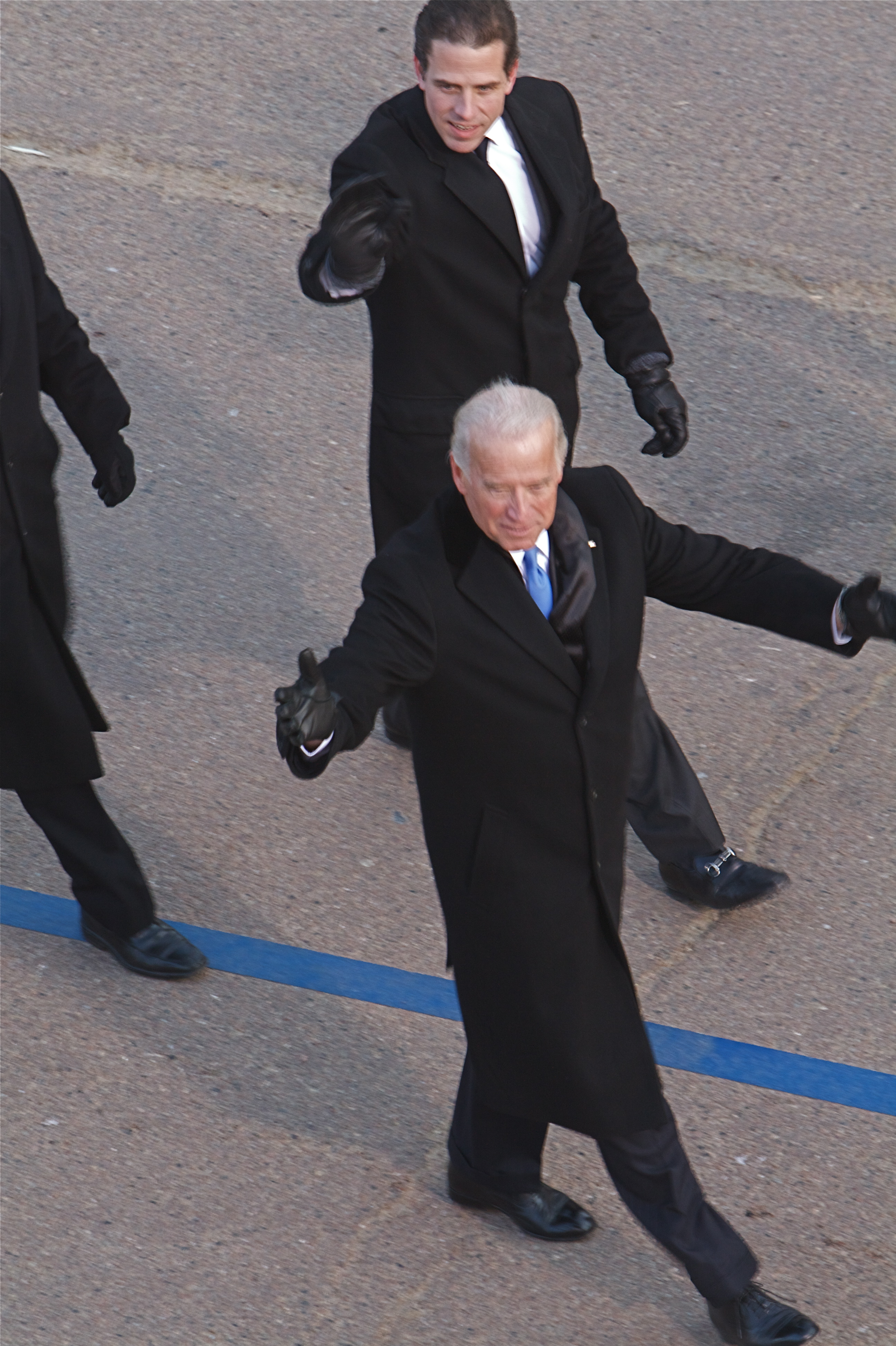

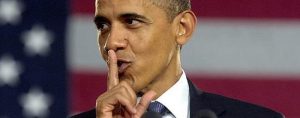
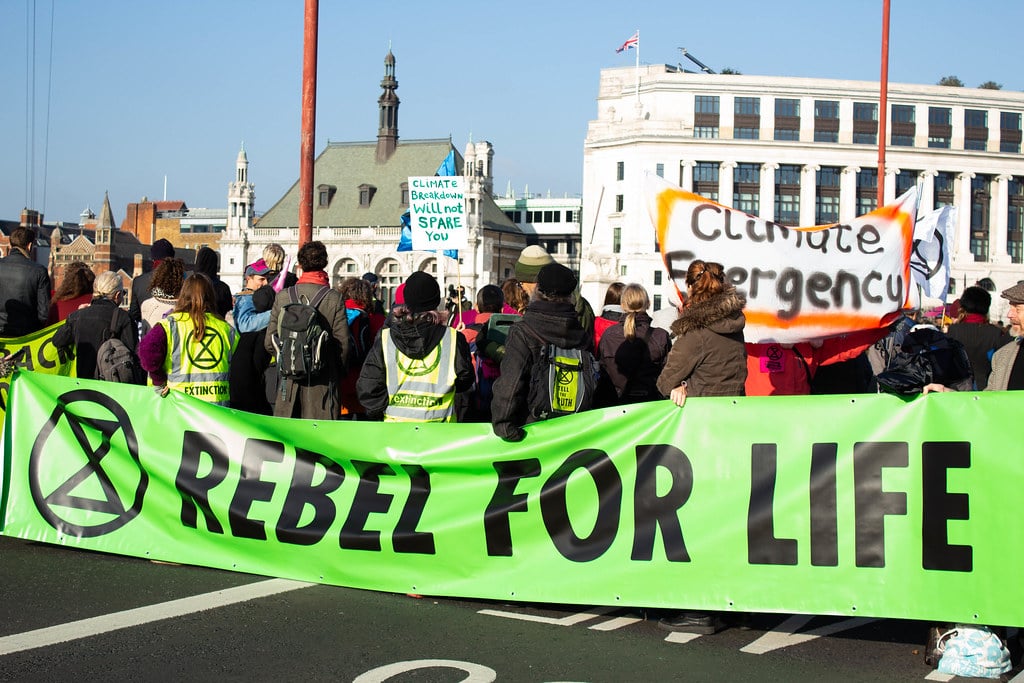
 Weather warfare has a long history; Earlier technologies were applied during the Vietnam war, when it was capable to prolong and enhance the Monsoon season, so as to make the paths the Vietcong used to transit from the North to the South were made impassable. That is really man-made.
Weather warfare has a long history; Earlier technologies were applied during the Vietnam war, when it was capable to prolong and enhance the Monsoon season, so as to make the paths the Vietcong used to transit from the North to the South were made impassable. That is really man-made.